In the complex landscape of employment law, landmark cases have played a pivotal role in shaping the rights and protections of workers across the United States, both in the public and private sectors. California, with its robust employment laws, has been a battleground for numerous groundbreaking discrimination cases that have left an indelible mark on labor history. From gender and race to disability and age, these legal battles have not only redefined the boundaries of workplace rights but have also set precedents that continue to influence legislation and shape the legal framework surrounding employment practices.
Today’s blog will dwell on the five pivotal employment discrimination cases that have significantly impacted labor history in California, showcasing the resilience of individuals who stood up against discrimination and the legal decisions that have reverberated through workplaces nationwide. From the landmark Fair Employment and Housing Act cases to high-profile disputes involving gender-based discrimination, each instance serves as a testament to the ongoing struggle for equality and punitive damages within California’s employment law.
Pavey v. Conley Construction Corp. (2008)
In the evolution of employment law in California, few cases have been as instrumental as Pavey v. Conley Construction Corp. in 2008. This landmark case served as a cornerstone in the establishment and reinforcement of the California Fair Employment and Housing Act (FEHA). FEHA, a pioneering piece of legislation, prohibits discrimination and other adverse actions in employment based on race, color, religion, sex, national origin, disability, and various other protected categories.
These employment discrimination cases involved an African-American employee, Terry Pavey, who brought a discrimination lawsuit against Conley Construction Corp., alleging racial violations of FEHA. Pavey’s claims centered on discriminatory practices and a hostile work environment, ultimately becoming a catalyst for broader discussions on workplace equality and the need for legal safeguards.
The significance of Pavey v. Conley Construction Corp. lies not only in its resolution but also in its role in shaping the interpretation and enforcement of anti-discrimination laws. The court’s decision reinforced the principles of FEHA, emphasizing the importance of equal opportunities for all employees, regardless of their race or ethnicity. This case, and others that followed in its wake, helped solidify the legal framework that safeguards employees from discrimination in California workplaces.
Pavey v. Conley serves as a standard for subsequent employment discrimination cases, influencing how courts approach and interpret similar claims. The legacy of this case extends beyond its immediate outcome, contributing to the ongoing evolution of employment law and the commitment to fostering workplaces free from racial discrimination and prejudice.
Harris v. Forklift Systems, Inc. (1993)
Harris v. Forklift Systems, Inc. stands as a pivotal case on gender discrimination, contributing significantly to the understanding and workplace anti-discrimination laws application. This landmark case, decided by the United States Supreme Court in 1993, involved a female employee, Teresa Harris, who filed a lawsuit against her employer, Forklift Systems, Inc., alleging a hostile work environment based on her gender.
The significance of Harris v. Forklift Systems, Inc. lies in its clarification of what constitutes a hostile work environment under Title VII of the Civil Rights Act of 1964. The District Court ruled that a hostile work environment doesn’t necessitate the presence of severe psychological harm or detriment to an employee’s well-being. Rather, it can result from discriminatory behavior that creates an intimidating, offensive, or hostile atmosphere.
The decision set a precedent for succeeding employment discrimination cases, emphasizing that the focus should be on the overall impact of the workplace environment on an employee, rather than specific, grievous incidents. This nuanced approach has been instrumental in shaping the legal landscape surrounding hostile work environment claims, making it more accessible for employees to seek protection against gender-based discrimination.
Harris v. Forklift Systems, Inc. emphasized the responsibility of employers to maintain a workplace free from discriminatory behavior and highlighted the importance of fostering a respectful and inclusive environment for all employees. The case’s impact extends beyond gender discrimination, influencing the interpretation of anti-discrimination laws in various contexts and reinforcing the commitment to eradicating discriminatory practices in the workplace.
Guz v. Bechtel National, Inc. (2000)
Guz v. Bechtel National, Inc. represents a significant milestone in the legal landscape surrounding age discrimination, particularly in California. The case, which reached the California Supreme Court in 2000, involved Robert Guz, a longtime employee of Bechtel National, Inc., who alleged that he was wrongfully terminated based on the unlawful action of age discrimination.
At the heart of the matter was the interpretation of the California Fair Employment and Housing Act (FEHA) concerning age-related employment decisions and varying impact claims. Guz argued that his termination was a result of age bias, and the case provided a crucial opportunity for the court to clarify the standards for proving age discrimination claims under the FEHA.
The California Supreme Court’s decision in Guz v. Bechtel National, Inc. highlighted the need to consider multiple factors when evaluating age discrimination claims. The court emphasized that a plaintiff must show that age was a substantial motivating factor in the adverse employment action and that the employer’s legitimate business reasons did not outweigh this factor. This nuanced approach acknowledged the complexity of employment decisions and reinforced the importance of a thorough examination of the circumstances surrounding each case.
The Guz employment discrimination case had a lasting impact on age discrimination litigation, shaping the legal standards for proving such claims and influencing subsequent decisions. It provided clarity on the burden of proof and the considerations relevant to age-related employment actions, guiding both employers and employees in understanding the parameters of age discrimination under California law.
By establishing a comprehensive framework for evaluating age discrimination claims, Guz v. Bechtel National, Inc. contributed significantly to the protection of older workers in California and reinforced the commitment to preventing discriminatory practices based on age in the workplace. The case remains a key reference point in age discrimination jurisprudence, influencing legal interpretations and strategies in similar employment disputes.

Green v. State of California (2007)
Green v. State of California represents a landmark case in the legal landscape of disability discrimination within the state. In 2007, the California Supreme Court heard the case of Deborah Green, a State of California public employee who alleged that her employer failed to reasonably accommodate her disability reasonably, leading to adverse employment actions.
At the core of Green v. State of California was the interpretation and application of the California Fair Employment and Housing Act (FEHA) concerning disability discrimination. The case played a crucial role in shaping the understanding of employers’ obligations to accommodate employees with disabilities and the interactive process required to facilitate reasonable accommodations.
The California Supreme Court’s decision after sufficient evidence emphasized the importance of engaging in a good-faith interactive process between employers and employees seeking accommodation for disabilities. The ruling clarified that both parties share the responsibility of participating in a meaningful dialogue to identify and implement reasonable accommodations that would enable the employee to perform essential job functions.
Green v. State of California significantly influenced disability discrimination law by setting a precedent for the interactive process, a vital component in resolving accommodation disputes. This case stressed the need for flexibility and collaboration between employers and employees in addressing disability-related challenges, and fostering an environment that promotes inclusivity and equal opportunities in the workplace.
By reinforcing the obligation to reasonably accommodate employees with disabilities, Green v. State of California contributed to a more comprehensive understanding of disability discrimination under FEHA. The case remains a key reference point for employers and employees navigating issues related to disability accommodations, and its impact continues to resonate in shaping the legal landscape surrounding workplace inclusivity and intentional discrimination in California.
Harris v. City of Santa Monica (2013)
Harris v. City of Santa Monica stands as a groundbreaking case that significantly advanced protections against sexual orientation discrimination in the workplace. In 2013, the California Court of Appeal issued a landmark decision in this case, which marked a turning point in recognizing and addressing discrimination based on sexual orientation under the California Fair Employment and Housing Act (FEHA).
The case involved Christopher Harris, a city employee with complaints of discrimination, who alleged that he faced workplace harassment due to his sexual orientation. Harris argued with direct evidence that the mistreatment he experienced amounted to sex discrimination under FEHA, as sexual orientation discrimination was not explicitly listed as a protected category at that time.
The court’s decision in Harris v. City of Santa Monica was a landmark interpretation of FEHA, holding that discrimination based on sexual orientation constitutes sex discrimination under the Act. This groundbreaking ruling expanded protections for LGBTQ+ employees, affirming that they have the right to work in an environment free from discrimination and prejudice based on their sexual orientation.
Harris v. City of Santa Monica played a crucial role in influencing subsequent legislative developments and legal interpretations regarding LGBTQ+ rights in the workplace. The decision reflected a growing recognition of the importance of protecting individuals from discrimination based on their sexual orientation, contributing to a broader societal shift towards greater inclusivity and acceptance.
This case’s impact extends beyond California, influencing discussions on federal and state levels about the need for comprehensive protections against sexual orientation discrimination in employment. Harris v. The City of Santa Monica stands as a testament to the ongoing evolution of anti-discrimination laws, reinforcing the commitment to fostering workplaces that embrace diversity and respect the rights of employees, regardless of their sexual orientation.
Let’s Keep Up the Fight for Your Rights
These five pivotal employment law discrimination cases in California illuminate a dynamic narrative in labor history. These legal milestones have left an enduring impact on the rights and protections of workers, shaping the intricate tapestry of employment law. From combating racial discrimination and clarifying the parameters of a hostile work environment in gender cases to establishing frameworks for age and disability discrimination claims, each case represents a unique chapter in the ongoing struggle for workplace equality and compensation for monetary damages.
The groundbreaking recognition of sexual orientation discrimination as a form of sex discrimination marked a significant advancement in LGBTQ+ rights. Collectively, these cases underscore the evolving commitment to fostering inclusive, diverse, and discrimination-free workplaces, highlighting the continuous evolution of legal standards and societal values in California employment law.
If you need to fight for justice during an employment discrimination claim, remember that having the best legal support in California is key to ensuring your rights are protected and respected. You never have to do this alone.




